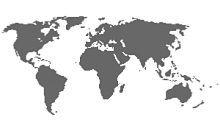
The Canada Revenue Agency (CRA) has released a revised Foreign Income Verification Statement, known as Form T1135, that now includes a simplified reporting regime for Canadians who own specified foreign property having a total cost of more than $100,000 but below $250,000 at any time in a taxation year.
The former Conservative federal government announced in the 2015 budget released in April that it intended to introduce a simplified reporting regime for Canadians with relatively modest foreign property holdings, and that the new reporting regime would be effective for taxation years that begin after 2014. The CRA has now released Form T1135 for the 2015 taxation year, which includes the simplified regime.
The new simplified method allows individuals to check a box for the type of different specified foreign properties they own and indicate in which countries most of that foreign property is held without having to provide additional detailed information. Income from those foreign properties — and the gain or loss in any disposition of property — also has to be reported.
“It’s a positive development,” says Debbie Pearl-Weinberg, executive director of tax and estate planning with Canadian Imperial Bank of Commerce’s wealth-advisory services unit. “The vast majority of Canadians are going to have the detailed reporting eliminated [as a requirement]. If you think how much the average Canadian holds outside of a Canadian mutual fund, or a Canadian registered plan, it’s not going to be that many who have $250,000 or more of foreign assets.”
However, the existing reporting regime, which requires taxpayers to provide much more detailed information regarding specified foreign property, continues to apply to taxpayers with foreign property that has a total cost of $250,000 or more at any time during a taxation year.
A Canadian-resident individual, corporation, trust, or partnership that, at any time in a taxation year, owns specified foreign property with a total cost of more than $100,000 must file a Form T1135 with the CRA. Specified foreign property includes funds and investments held outside of Canada, but excludes, among other things, property used exclusively for personal use, such as a vacation home or a vehicle. Property held in registered plans, such as RRSPs and tax-free savings accounts, are excluded from the Form T1135 reporting requirements.
The CRA provided a measure of relief in 2014, when it allowed taxpayers who have an account with a Canadian securities dealer or a Canadian trust company to report the aggregate value of all specified foreign property held in that account, but on a country-by-country basis, simplifying the compliance process. Taxpayers with property in such accounts would report the highest fair market value at the end of any month in the taxation year; the fair market value at the end of the year; the aggregate income earned in the year; and the gain or loss realized from dispositions during the year.
Financial services sector insiders and tax experts have been arguing with the government about the T1135 over the past several years, suggesting that the reporting regime represents an onerous and costly compliance burden for taxpayers, particularly those Canadians without significantly large foreign property holdings. Pearl-Weinberg, for her part, argues that the Department of Finance Canada should consider raising the minimum threshold amount completely to $250,000 from $100,000.
“I’m not sure really how much of a benefit it is for the CRA to get this reporting [from those with less than $250,000 in foreign property],” she says. “I’m questioning why they even need it.”
In budget documents, the government has argued that the reporting associated with the T1135 regime helps it in its commitment to combatting international tax evasion and aggressive tax avoidance.